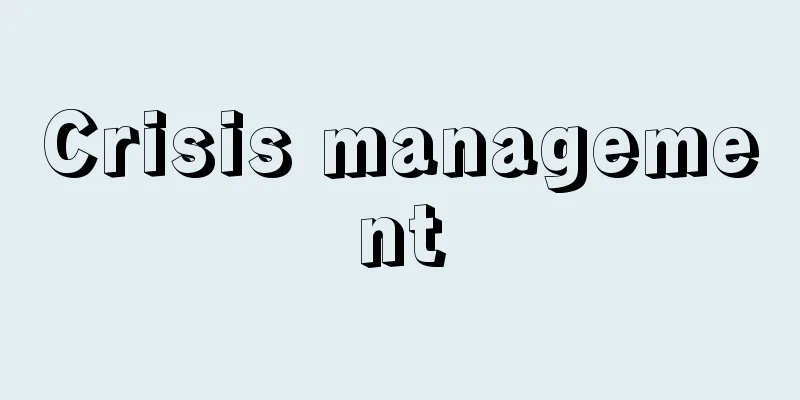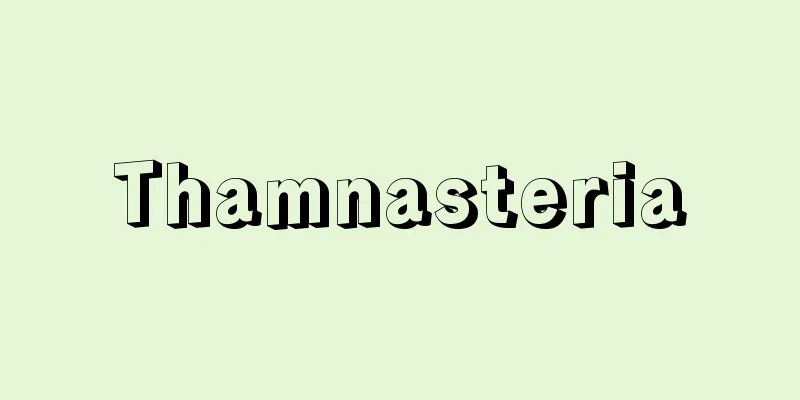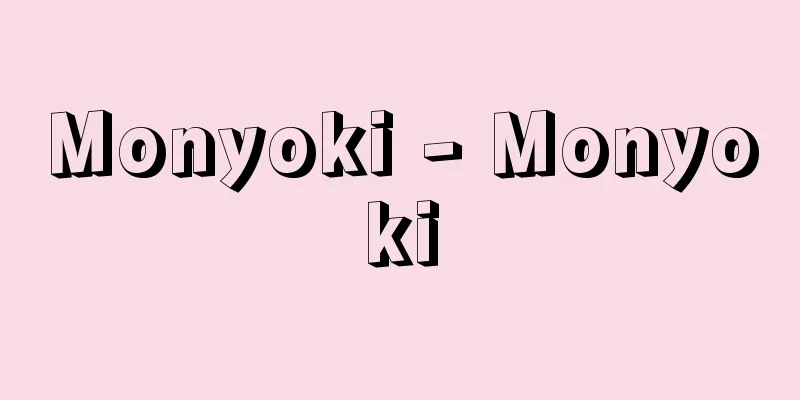Crisis management

|
The concept of a crisis varies widely depending on the level at which it occurs, the content of the crisis itself, and whether it is a man-made or natural disaster. In general, it can be said to be an unforeseen emergency that occurs at the level of individuals, domestic and international society, and even at the level of various organizations such as companies. Preventing such situations in advance and taking response measures as quickly as possible after a crisis occurs is called crisis management. [Aoki Kazuyoshi] Crisis Management in the Cold WarInternational crisis management has focused on responding to situations such as wars and conflicts. The need for crisis management was recognized especially after World War II, when the risk of a nuclear war between the United States and the Soviet Union increased, and the United States and the Soviet Union began to explore ways to prevent such a war. The two countries, full of mutual distrust, increased their nuclear weapons on the one hand, while paradoxically adopting a nuclear deterrent policy of using them to deter a preemptive attack from the other side. However, this was nothing but a policy of expanding nuclear weapons balance, and a series of crisis management measures were taken in the early 1970s, including the conclusion of the US-Soviet Agreement on the Prevention of Nuclear War. In addition, during the Cold War, the Cuban Missile Crisis, the Vietnam War, and the Middle East War occurred, but in the sense that these did not develop into a global crisis, it can be said that the crisis management of the United States and the Soviet Union for the world was somewhat effective. However, at the same time as the end of the Cold War, many regions and countries began to experience wars, and the need to build an international crisis management system was pointed out once again. [Aoki Kazuyoshi] Building international crisis managementIn this context, attention was focused on the crisis management capabilities of the United Nations as a collective security organization. In June 1992, Boutros Boutros Ghali, Secretary-General at the time, submitted a report to the Security Council entitled "An Agenda for Peace," which called for the UN to take the lead in four stages of activities: (1) preventive diplomacy, (2) peacemaking, (3) peacekeeping, and (4) peacebuilding, and proposed that stages (2) through (4) be addressed through the permanent establishment of peace enforcement forces. Although this was an extremely innovative and challenging idea, the Ghali concept was implemented in UN activities during the Somali civil war in 1993, but was eventually forced to be withdrawn in the face of fierce resistance from the Somali people. Since then, UN activities have been limited to PKOs (United Nations peacekeeping operations), as before. Other regional crisis management organizations that have attracted attention besides the UN include the Organization for Security and Cooperation in Europe (OSCE), the Euro-Atlantic Partnership Council (EAPC), the Southern African Development Community (SADC) and the Economic Community of West African States (ECOWAS) in Africa, and the ASEAN Regional Forum (ARF) in Southeast Asia. The OSCE in particular has 52 member countries in Europe and is expected to act as a confidence-building mechanism to prevent conflicts from occurring in the region. However, the need for international crisis management is not limited to situations such as war, but is also required in areas such as global environmental destruction and natural disasters. Many declarations and regulatory treaties have been concluded in the past in response to increasingly serious environmental destruction, but it can be said that they have had no real effect. Measures have been taken, such as the establishment of the Global Environment Facility in 1991, the adoption of Agenda 21 at the Earth Summit in 1992, the recommendation of an environmental tax by the OECD in 1993, and the regulation of greenhouse gases at the Kyoto Summit in 1997. However, it is difficult to say that a global agreement and cooperative action has been reached against environmental destruction, and the reality is that the prioritization of national interests takes precedence over environmental conservation as a global interest. [Aoki Kazuyoshi] American Crisis ManagementBesides such international crisis management, each country has been preparing for the occurrence of unforeseen events. The United States was one of the countries that started to develop a crisis management system relatively early on. In 1979, five agencies were unified and centralized to form the Federal Emergency Management Agency (FEMA). It has 10 regional offices with its headquarters in Washington, D.C., a director-general, 2,600 full-time staff, and a permanent fund of 1.5 billion dollars. FEMA's swift response to major accidents and incidents is well known. However, the September 11, 2001 terrorist attacks and the anthrax incident in the United States, which was spread through mail, have pointed out the lack of crisis management capabilities for mass murder terrorist attacks, and new ways of responding to crises are being explored. [Aoki Kazuyoshi] Japan's Crisis ManagementOn the other hand, the Japanese government's ability to respond to crises both at home and abroad is by no means as strong as it was in the past. As seen in the 1974 oil crisis and the response to the Gulf War in 1991, it is clear that the occurrence of international contingencies amid deepening interdependence can lead to various domestic crises. The Japanese government established the "Ministerial Council on Comprehensive Security" in 1980, and the "National Security Office" and "National Security Council" in the Cabinet Secretariat in 1986. Furthermore, in 1992, the PKO Cooperation Law (Law Concerning Cooperation with United Nations Peacekeeping Operations, etc.) was enacted, taking the first legal measures to take concrete action in response to international conflicts. However, the Great Hanshin-Awaji Earthquake occurred in 1995, and the response to it was criticized as being significantly inadequate, which is still fresh in our memory. In response to this situation, in 1998 the Cabinet Secretariat established a Crisis Management Officer and a Crisis Management Office (Cabinet Security and Crisis Management Office) to respond to emergencies such as large-scale natural disasters such as earthquakes and storms and floods, serious accidents such as ship and plane accidents and nuclear power plant accidents, serious incidents such as riots, hijackings and mass-casualty terrorist attacks, and other armed attacks on Japan. However, this was also significantly smaller in scale than FEMA in the United States, and considering the current situation in which there is a high probability of unforeseen events occurring both at home and abroad, it must be said that there is an urgent need for the Japanese government to improve its crisis management capabilities. [Aoki Kazuyoshi] "Disaster and Environmental Crisis Management Theory: Theory and Practice of Corporate Disaster and Environmental Risk Management" by Oizumi Koichi (1995, Koyo Shobo)" ▽ "Security Theory: Global Crisis Management in the 21st Century" by Morimoto Satoshi (2000, PHP Institute)" ▽ "Japan, a 'Developing Country in Crisis Management': To What Extent Can It Respond to Unforeseen Events?" by Omori Yoshio (2000, PHP Institute) ▽ "Sociology of Crisis Management - Disasters, Conflicts, and Sea Lanes" edited by Tanaka Hakutomo and Fukuchi Takeo (2001, Hokuju Publishing) ▽ "Age of Crisis and Crisis Management - Reading 21st Century Society" edited by Yokohama University of Commerce Extension Lecture Committee (2001, Nansosha) ▽ "Crisis Management of Natural Disasters" edited by Sasaki Atsuyuki (2001, Gyosei) ▽ "Research on Crisis Management" by Oizumi Koichi (2001, Bunshindo) ▽ "Crisis Management in Japan" by Toshikawa Takao (2002, Kyodo News) ▽ "Crisis Management - Theory and Practice of Crisis Management" by Oizumi Koichi, 3rd Edition (2002, Dobunkan Publishing) ▽ "International Crisis Studies - Crisis Management and Preventive Diplomacy" edited by Kimura Hiroshi (2002, Sekaishisosha) ▽ "A Nation that Values Each and Every Individual -- In Search of the Origin of Crisis Management" by Minoru Taki (2002, Japan Legislative Association) " "Cities Cannot War -- Modern Crisis Management Theory" by Takayoshi Igarashi and the Legislative Studies Seminar (2003, Kojin no Tomosha) [References] | | | |Source: Shogakukan Encyclopedia Nipponica About Encyclopedia Nipponica Information | Legend |
|
危機の概念は、危機が生ずる次元や危機自体の内容に応じて、さらには危機が人災であるか天災であるか、などによってきわめて多岐にわたる。一般的には個人の次元から国内および国際社会、さらには企業などの諸々の組織の次元において生ずる不測の緊急事態といえる。そうした事態を事前に予防したり、危機発生後の対応措置を可及的速やかに講ずることを危機管理という。 [青木一能] 冷戦時代の危機管理国際的な危機管理は、戦争や紛争といった事態への対応に重心が置かれてきた。危機管理の必要性はとくに第二次世界大戦後における米ソ核戦争の危険性の高まりのなかで認識され、その防止措置が米ソ間で模索されることになった。相互不信に満ちた両国は核兵器の増強を一方で行いつつ、逆説的にはそれをもって相手側の先制攻撃を抑止するという核抑止策を採用した。しかしそれは核兵器の拡大均衡策に陥るにほかならず、1970年代初頭には米ソ核戦争防止協定の締結など一連の危機管理措置が講じられた。また米ソ冷戦下ではキューバ・ミサイル危機、ベトナム戦争や中東戦争などが発生したが、それらが世界的な危機にまでは至らなかったという意味で、米ソ両国の世界に対する危機管理はいちおう作動してきたといえる。しかし東西冷戦が終焉(しゅうえん)するのと軌を一にして、多くの地域や国で戦争が多発する事態に至り、改めて国際的な危機管理装置構築の必要性が指摘されてきた。 [青木一能] 国際的な危機管理の構築そうしたなかで集団安全保障機構たる国際連合の危機管理能力に注目が集まった。当時の事務総長であったブートロス・ブートロス・ガリは1992年6月に「平和への課題」と題する報告書を安保理に提出し、(1)予防外交preventive diplomacy、(2)平和創造peace making、(3)平和維持peace keeping、(4)平和構築peace buildingの4段階の活動に国連が主導権を発揮し、(2)から(4)では平和執行部隊の常設を通して事にあたるとした。きわめて画期的、挑戦的であったが、そのガリ構想は1993年のソマリア内戦時の国連活動で実施されたものの、ソマリア住民の激しい抵抗の前に結局撤回を余儀なくされたのである。その後の国連の活動は従前のようにPKO(国連平和維持活動)に限定されるようになっている。 国連以外で地域的な危機管理機構として注目されているのが「ヨーロッパ安全保障協力機構」(OSCE)や「ヨーロッパ大西洋パートナーシップ理事会」(EAPC)、アフリカでの「南部アフリカ開発共同体」(SADC)や「西アフリカ諸国経済共同体」(ECOWAS)、東南アジアの「ASEAN地域フォーラム」(ARF)などがある。とくにOSCEはヨーロッパ52か国が参加し、域内での紛争発生を未然に防止すべく諸国間の信頼醸成装置として期待されている。 しかし国際的な危機管理の必要性は戦争といった事態だけではなく、地球的な環境破壊や自然災害といった分野においても求められている。しだいに深刻化する環境破壊に対してこれまでも多くの宣言や規制条約が結ばれてきたが、実質的な効力はなかったといえる。1991年には「地球環境ファシリティ」の設置、1992年には地球サミットでの「アジェンダ21」の採択、1993年にはOECDによる「環境税」の推奨、そして1997年には京都サミットでの「温暖化ガスの規制」などの措置がとられてきた。しかし環境破壊に対する世界的な合意と協調行動がとられているとはいいがたく、国益優先の思考が地球益としての環境保全に優先しているのが現実であろう。 [青木一能] アメリカの危機管理一方、こうした国際的な危機管理のほかに、各国内において不測の事態の発生に対する対応が図られてきた。なかでも比較的早くから危機管理のための制度上の整備が進められてきたのがアメリカである。1979年には五つの機関を統一して一元化し、アメリカ連邦危機管理庁(FEMA(フィーマ))が創設された。ワシントンの本部を中心に10の地方事務所を設け、長官を頂点に2600人の専従者を擁し、15億ドルの基金を常備している。FEMAの重大事故や事件に対する機動的な活動はよく知られているところである。しかし、2001年9月11日に発生した同時多発テロ、さらにはアメリカ国内に郵便物として炭疽菌(たんそきん)が散布された事件では、大量殺傷型のテロに対する危機管理能力の不足が指摘され、新たな形での危機への対応が模索されている。 [青木一能] 日本の危機管理他方、日本政府の国内外における危機対応能力は従前よりけっして高いものとはいえないままにある。1974年(昭和49)の石油危機をはじめ、1991年(平成3)の湾岸戦争における対応など、相互依存の深化のなかで国際的な不測の事態の発生が国内のさまざまな危機を醸成することは明らかである。日本政府は1980年に「総合安保閣僚会議」、1986年に内閣官房に「安全保障室」と「安全保障会議」を設置した。さらに1992年にPKO協力法(国際連合平和維持活動等に対する協力に関する法律)を成立させ、国際的な紛争への対応に関して初めて具体的活動を行う法的措置を講じた。しかし1995年には阪神・淡路(あわじ)大震災が発生し、それへの対応が著しく不備なものとして批判を受けたことは記憶に新しい。そうした事態を受けて1998年には内閣官房に危機管理監と管理監室(内閣安全保障・危機管理室)を設置し、震災や風水害などの大規模自然災害、船舶・飛行機事故や原子力発電所事故などの重大事故、暴動やハイジャック、大量殺傷型テロなどの重大事件、その他日本への武力攻撃などの緊急事態に対応するものとした。しかしそれもまた、アメリカのFEMAに比べて著しく小規模なものであり、国内外で不測の事態が発生する蓋然性(がいぜんせい)が高い現状にかんがみれば、日本政府の危機管理能力の向上は緊急性を要するといわざるをえない。 [青木一能] 『大泉光一著『災害・環境 危機管理論――企業の災害・環境リスク管理の理論と実践』(1995・晃洋書房)』▽『森本敏著『安全保障論――21世紀世界の危機管理』(2000・PHP研究所)』▽『大森義夫著『「危機管理途上国」日本――万一の事態にどこまで対応できるのか?』(2000・PHP研究所)』▽『田中伯知編著、福地建夫著『危機管理の社会学――災害・紛争・シーレーン』(2001・北樹出版)』▽『横浜商科大学公開講座委員会編『危機の時代と危機管理――21世紀の社会を読む』(2001・南窓社)』▽『佐々淳行編著『自然災害の危機管理』(2001・ぎょうせい)』▽『大泉光一著『危機管理学研究』(2001・文真堂)』▽『歳川隆雄著『日本の危機管理』(2002・共同通信社)』▽『大泉光一著『クライシス・マネジメント――危機管理の理論と実践』三訂版(2002・同文舘出版)』▽『木村汎編『国際危機学――危機管理と予防外交』(2002・世界思想社)』▽『滝実著『一人ひとりを大切にする国家――危機管理の原点を求めて』(2002・日本法制学会)』▽『五十嵐敬喜・立法学ゼミ著『都市は戦争できない――現代危機管理論』(2003・公人の友社)』 [参照項目] | | | |出典 小学館 日本大百科全書(ニッポニカ)日本大百科全書(ニッポニカ)について 情報 | 凡例 |
<<: Criticism of the Kojiki and Nihonshoki
>>: Kojiki Kayo - Listen to it
Recommend
Guillaume de Champeaux
Around 1070-1121 An early scholastic theologian. H...
Inheritance of the family headship
This refers to an inheritance in which one person...
Carbamide
[Synonym] Urea Source: Morikita Publishing "...
Euphorbia milii (English spelling) Euphorbiamilii
… [Hiroshi Yuasa]. … *Some of the terminology tha...
Snakeberry (Snakeberry) - Duchesnea indica
A perennial plant of the Rosaceae family. It is fo...
Luteinizing hormone
...The sexual cycle is brought about by a kind of...
Dokai - Sea of Kuki
The ancient name of Dokai Bay. *The Chronicles ( 7...
Kaito-so - Kaito-no-sho
This manor was located in Kaito and Nakajima count...
Izanagi Style Prayer - Izanagi Style Prayer
…Medicinal plants are also cultivated. The Izanag...
Le Mans (English spelling)
The capital of the Sarthe department in northweste...
Optimism - optimism
Optimism. A view that the meaning of the world an...
Two-tailed moth - Two-tailed moth
A general term for insects in the Lepidoptera fami...
Takakuni Hatakeyama
Year of death: 1351.3.10 (Kan'o 2/Shohei 6.2.1...
Steinbock (English spelling)
A small antelope with a slim, slender body. A mamm...
Paléo (English spelling) paleo
...Similar things are called longyi in Myanmar an...









